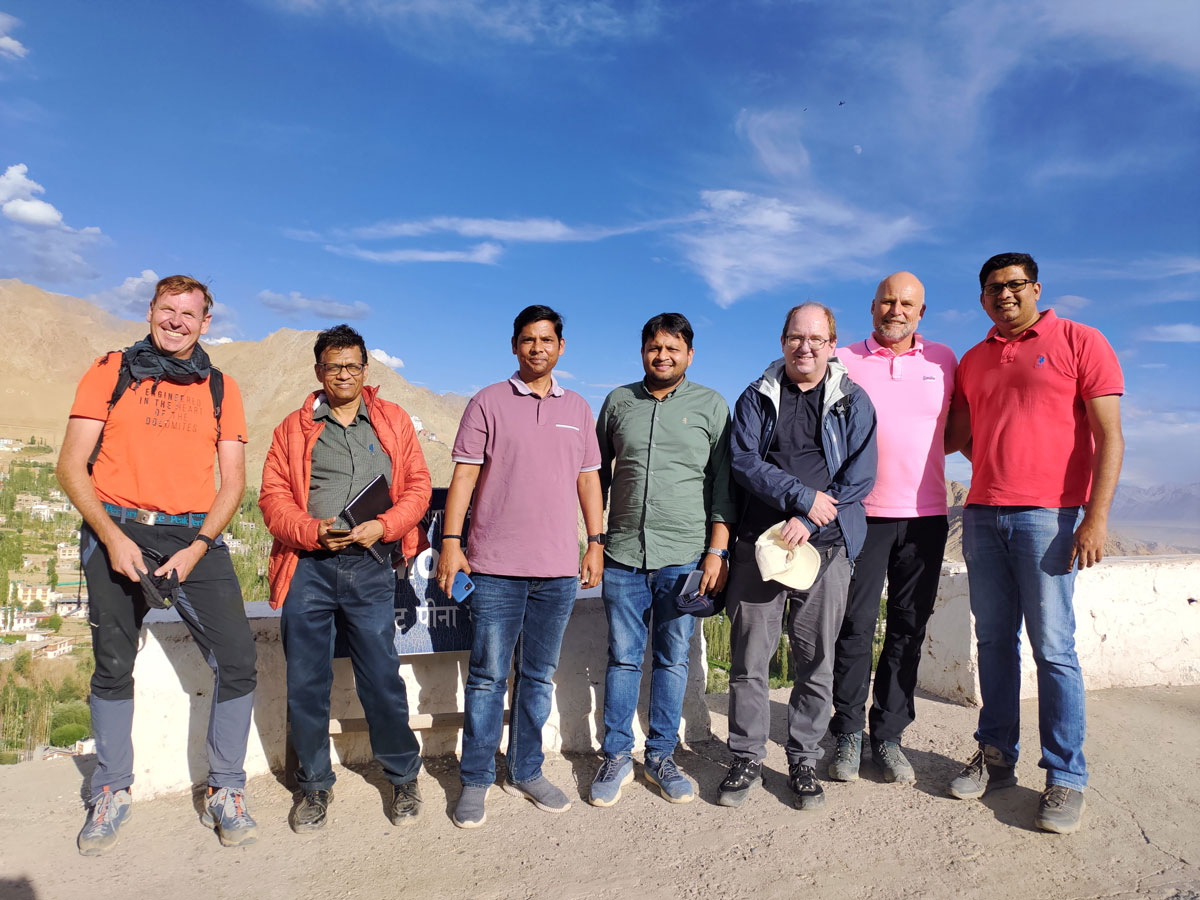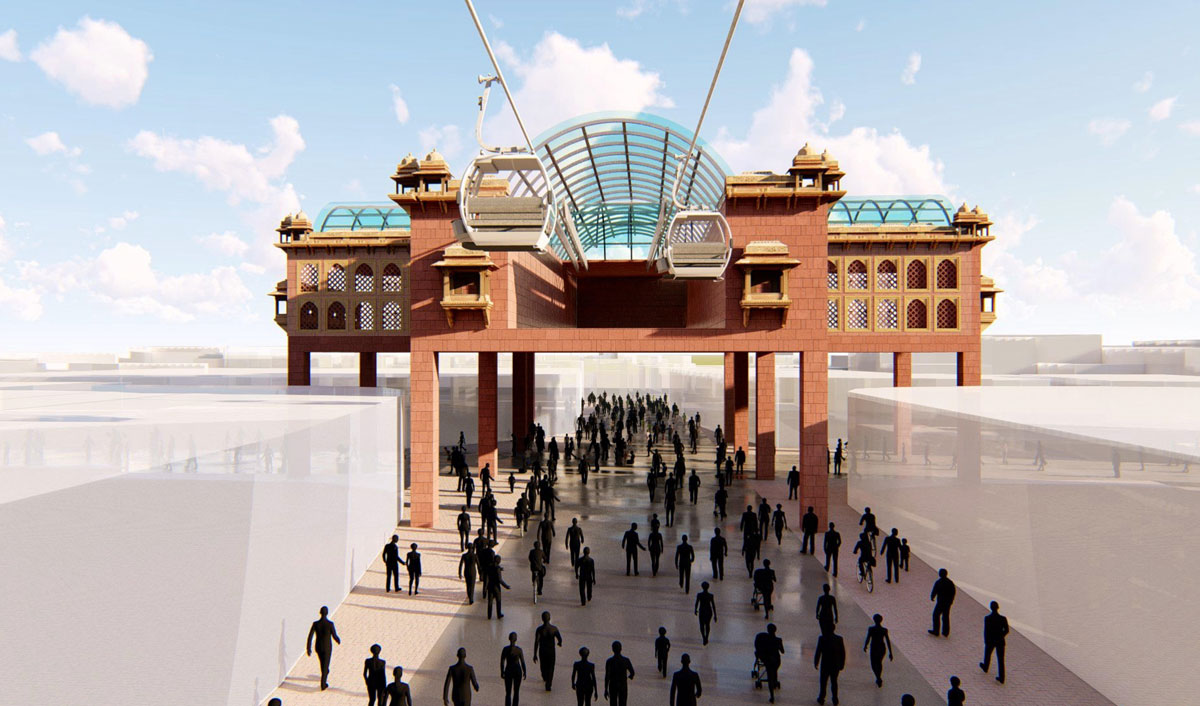
Cities
Eleven urban ropeways for India
For the state-owned National Highway Logistics Management Limited (NHLML), the two companies are designing installations throughout the country with a total length of around 50 kilometers.
The first project is being built in Varanasi in the state of Uttar Pradesh: from 2025, the urban ropeway will take up to 3,000 pilgrims per hour safely to their destination.
The applications range from relieving traffic congestion in urban areas to regulating the flow of pilgrims and providing tourist attractions. There are more than 3,500 kilometers between the individual projects. They stretch from Leh in the northernmost Union Territory of Ladakh to Palani in the southernmost state of Tamil Nadu.
“We examine potential locations, calculate their profitability and develop optimal concepts for ropeways throughout India. In doing so, we bring in our know-how from alpine projects and rely on state-of-the-art technology,” explains Stephan Salzmann, Managing Director of SALZMANN Ingenieure.
Route
The urban cable car in Varanasi connects the Varanasi Cantt railroad station and the Kashi Vishwanath temple district.
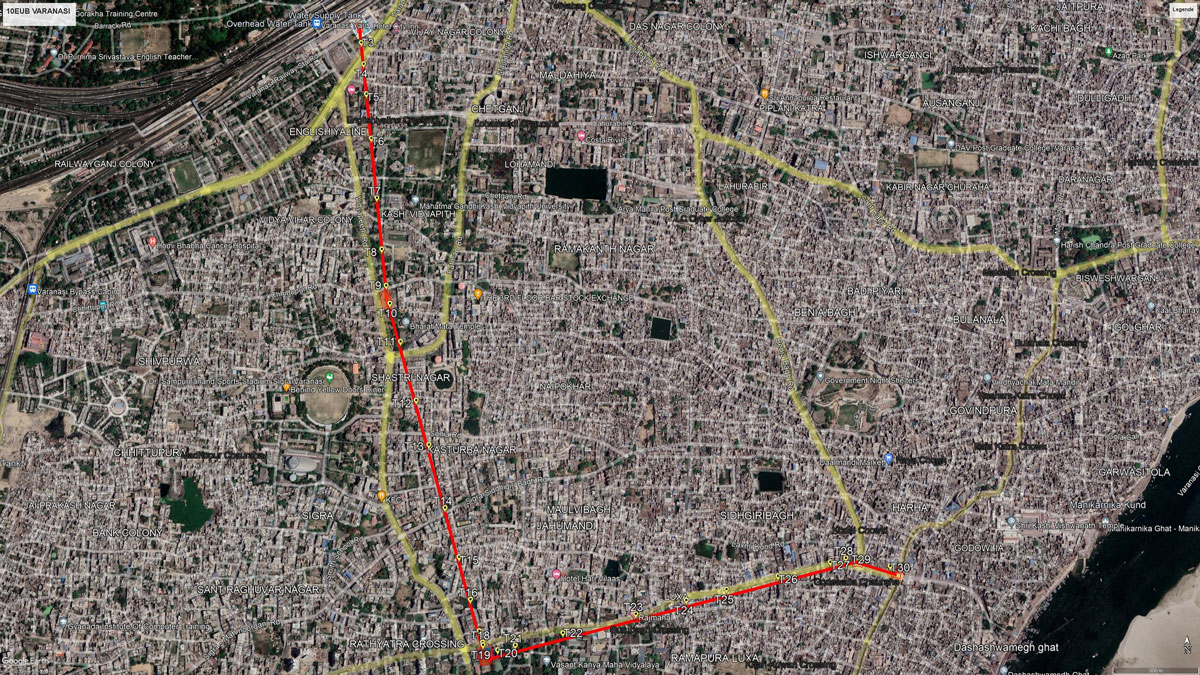
Plans for the whole of India
Together with the Bernard Group, based in Hall in Tyrol, the Bregenz office is planning eleven projects throughout India on behalf of National Highways Logistics Management Limited (NHLML).
In addition to feasibility studies for 15 locations, the joint venture is responsible for the complete design of eleven ropeway projects including structural analysis and buildings as the basis for a general contractor tender.
“Climate, culture, location, topography and type of use differ greatly. Each project is a new world, demands new perspectives and enriches our expertise,” says Salzmann.
Stations
Location of the future terminus of the urban ropeway in Varanasi planned by Salzmann Ingenieure and the Bernard Group.
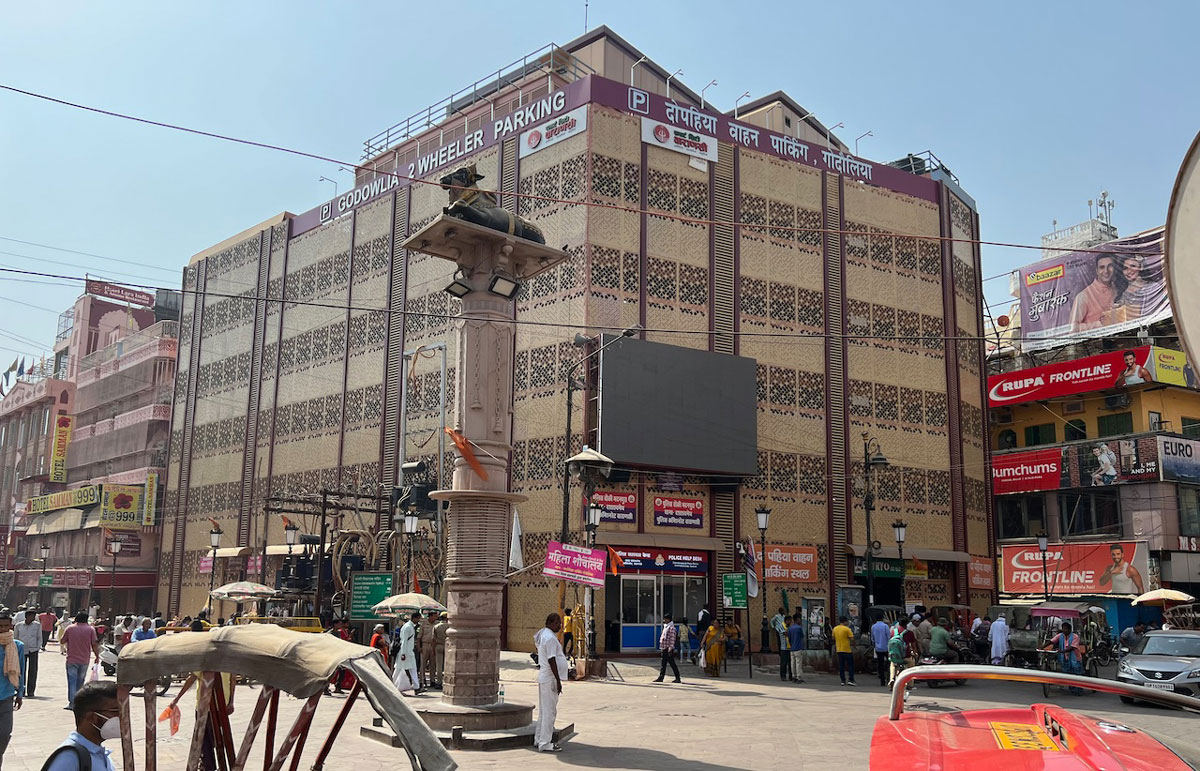
Varanasi lighthouse project
The first project is being built in the megacity of Varanasi in the state of Uttar Pradesh. There, Salzmann Ingenieure and the Bernard Group are planning a modern urban ropeway from Varanasi Cantt train station to the Kashi Vishwanath temple district with the ghats on the Ganges.
With more than 90,000 visits daily, the temple in the millennia-old pilgrimage site is one of the most important in all of India. The path to the holy sites still leads on foot through crowded streets.
From 2025, the pilgrims are expected to be transported to and from the site in 10-seater gondolas over two sections – 3,000 people per hour. The route, which is 3.6 kilometers long in total, runs parallel to the main traffic arteries and thus blends in harmoniously with the existing buildings.
“As safe and comfortable transport solutions, urban ropeways create direct connections. They reduce the volume of traffic at neuralgic points, bridge historically evolved structures without any coarse interventions and are thus perfectly suited for heavily frequented routes,” explains Stephan Salzmann.
The planning has been completed, and the tender for construction and operation is currently underway.
Urban cable car Varanasi
- 10-cabin monocable gondola lift
- Conveying capacity: 3,000 p/h
- Total line length: 3.6 km
- Two sections, six stations
- Start: Varanasi Cantt station,
- Destination: Kashi Vishwanath Temple (Godowlia)
- Planning: Salzmann Ingenieure and Bernard Group
Concrete plans
Stephan Salzmann presents ropeway projects in India for the government client NHLML.
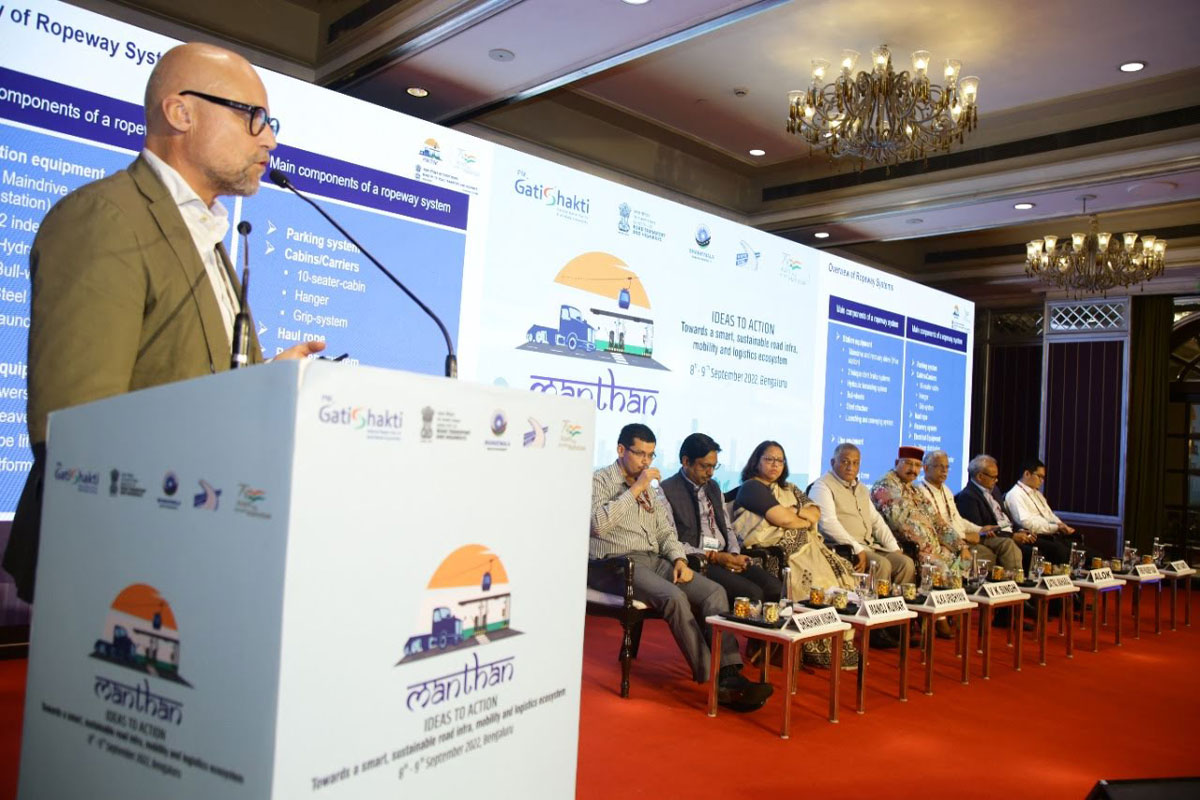
Outlook
The next projects are in Kullu in the state of Himachal Pradesh and in Shivkhori in the state of Jammu Kashmiran. Two single-cable ropeways are being built there with a conveying capacity of 1,500 and 1,800 people per hour respectively.
“Exciting tasks with great potential for innovative solutions with exemplary character,” Salzmann is pleased to say. The major contract in India coincides exactly with SALZMANN Ingenieure’s anniversary year.
The team (from the left):
Christopher Cooper (Bernard), NC Srivastava, Ravinder, Garg Gaurang (all NHLML), Jörg Egger, Stephan Salzmann (Salzmann Ing.) and Mrigank Shekhar (Bernard).
